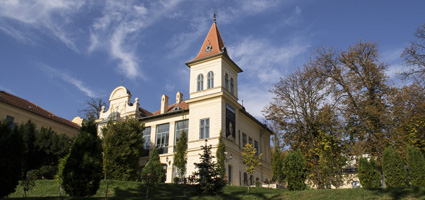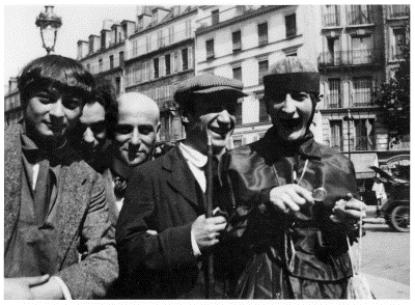2024. April 29. Monday
The Vaszary Gallery - Balatonfüred
 |
Address: 8230, Balatonfüred Honvéd u. 2-4.
Phone number: (87) 950-876 /1
E-mail: vaszary.foglalas@furedkult.hu
Opening hours: Tue-Sun 10-18
|
The exhibition has closed for visitors.
Museum tickets, service costs:
|
Individual ticket for adults
|
2200 HUF
|
|
|
Individual ticket for adults
(Balatonfüred-ticket)
|
1100 HUF
|
|
|
Group ticket for adults
(min. 10 people)
|
2000 HUF
|
/ capita
|
|
Group ticket for adults
(Balatonfüred-ticket, min. 10 people)
|
990 HUF
|
/ capita
|
|
Individual ticket for students
|
1100 HUF
|
|
|
Group ticket for students
(min. 10 people)
|
990 HUF
|
/ capita
|
|
Individual ticket for teachers
|
1100 HUF
|
|
|
Group ticket for teachers
(min. 10 people)
|
990 HUF
|
/ capita
|
|
Individual ticket for pensioners
|
1100 HUF
|
|
|
Group ticket for pensioners
(min. 10 people)
|
990 HUF
|
/ capita
|
|
Ticket for families
|
4800 HUF
|
/ family
|
|
Individual combined ticket for adults
(Vaszary Gallery + Mór Jókai Memorial Museum)
|
3500 HUF
|
|
|
Individual combined ticket for adults
(Balatonfüred-ticket, Vaszary Gallery + Mór Jókai Memorial Museum)
|
1600 HUF
|
|
|
Individual combined ticket for adults
(Mór Jókai Memorial Museum + Vaszary Gallery + Vitorlázeum)
|
4800 HUF
|
|
|
Individual combined ticket for adults
(Balatonfüred-ticket, Mór Jókai Memorial Museum + Vaszary Gallery + Vitorlázeum)
|
2400 HUF
|
|
|
Group combined ticket for adults
(Vaszary Gallery + Mór Jókai Memorial Museum, min. 10 people)
|
2800 HUF
|
/ capita
|
|
Group combined ticket for adults
(Balatonfüred-ticket, Vaszary Gallery + Mór Jókai Memorial Museum, min. 10 people)
|
1400 HUF
|
/ capita
|
|
Individual combined ticket for students
(Vaszary Gallery + Mór Jókai Memorial Museum)
|
1600 HUF
|
|
|
Individual combined ticket for students
(Mór Jókai Memorial Museum + Vaszary Gallery + Vitorlázeum)
|
2400 HUF
|
|
|
Group combined ticket for students
(Vaszary Gallery + Mór Jókai Memorial Museum, min. 10 people)
|
1400 HUF
|
/ capita
|
|
Individual combined ticket for teachers
(Vaszary Gallery + Mór Jókai Memorial Museum)
|
1600 HUF
|
|
|
Individual combined ticket for teachers
(Mór Jókai Memorial Museum + Vaszary Gallery + Vitorlázeum)
|
2400 HUF
|
|
|
Group combined ticket for teachers
(Vaszary Gallery + Mór Jókai Memorial Museum, min. 10 people)
|
1400 HUF
|
/ capita
|
|
Individual combined ticket for pensioners
(Vaszary Gallery + Mór Jókai Memorial Museum)
|
1600 HUF
|
|
|
Individual combined ticket for pensioners
(Mór Jókai Memorial Museum + Vaszary Gallery + Vitorlázeum)
|
2400 HUF
|
|
|
Group combined ticket for pensioners
(Vaszary Gallery + Mór Jókai Memorial Museum, min. 10 people)
|
1400 HUF
|
/ capita
|
|
Combined ticket for families
(Vaszary Gallery + Mór Jókai Memorial Museum, 2 adults + child)
|
7700 HUF
|
/ family
|
|
Combined ticket for families
(Mór Jókai Memorial Museum + Vaszary Gallery + Vitorlázeum, 2 adults + child)
|
10500 HUF
|
/ family
|
|
Individual guide
|
3000 HUF
|
|
|
Group guide
(min. 4 people)
|
12000 HUF
|
/ group
|
Twenty-nine photographs are known from the series which were taken during the period of World War I by the French poet and film director Jean Cocteau of Pablo Picasso and his friends, the Bohemian table society living in the artists’ quarter of Montparnasse in the Paris of the time, including Amadeo Modigliani, Max Jacob, Moïse Kisling and one of Picasso’s models and his lover at the time, called Pâquerette, who is known exclusively from these photographs.

The photographs were taken in the Café de la Rotonde and its surroundings, on the Carrefour Vavin (the square now named after Picasso) some weeks after Cocteau returned from the Belgium front, and it is almost certain that during the period when the photographs were taken he called upon Picasso –also featuring in the pictures – to make the visual design for the play he co-wrote with Erik Satie, titled Parade, later performed with great success by Dhiagilev’s Russian Ballet; this commission later brought breakthrough recognition to Picasso. In this sense Cocteau’s photos draw a line between the end of one era and the overture of a new one, almost to the date, preparing the road upon which Picasso embarked and which led to his becoming one of most popular painters in the world.
The series taken by Cocteau was discovered by Billy Klüver – a pioneer in electronic art who was working in the Bell Telephone Laboratories at the time – when he and his wife, Julie Martin, were searching for photographs of the Montparnasse artists in the French capital in 1978.
Billy Klüver, of Swedish origin, was born in Monaco and became known for implementing Jean Tinguely’s kinetic sculpture, titled Tribute to New York, which was installed in 1960 in the garden of the Museum of Modern Art in New York and self-destructed in half an hour.
He founded the artists’ group Experiments in Art and Technology (E.A.T.) in New York in 1966 together with his colleague Fred Waldhauer, also an electrical engineer, and two artists, Robert Rauschenberg and Robert Whitman. This was the first initiative in the history of modernism seeking to create works based on ideas jointly conceived by artists and engineers and focusing on the future of technology. The group, which eventually grew into a movement, was soon joined by thousands of artists and engineers, including artists combining the cutting edge technology of the time with happenings, such as John Cage, David Tudor and Yvonne Rainer, who also participated in the programme titled 9 Evenings: Theatre and Engineering, announced by E.A.T.; as well as one of the most important representatives of pop art, Robert Rauschenberg, who opened the event with his interactive performance titled Open Score; and one of the pioneers of cognitive psychology, Béla Julesz, hailing from Budapest.
Exploring the frontiers of art, Billy Klüver approached works of fine with the scientific stance of an electrical engineer. This approach is manifest in the way he immersed himself in the study of Jean Cocteau’s photographs. He realised that the exact date Cocteau took the photographs – on 6x9 cm negatives, with the camera his mother lent him – could be calculated based on the shadows of the buildings that can be seen in the background as well as the position of the Sun and the light’s angle of incidence. It was established on the basis of his research carried out at the Bureau des Longitudes, the observatory in Paris, as well as based on meteorological and astronomical maps of the given day, measurements taken at the location, and notes made by participants in the event at the time and subsequently that the pictures were taken between 12.30 and 16.30 on 12 August 1916.

The photographs were taken in the Café de la Rotonde and its surroundings, on the Carrefour Vavin (the square now named after Picasso) some weeks after Cocteau returned from the Belgium front, and it is almost certain that during the period when the photographs were taken he called upon Picasso –also featuring in the pictures – to make the visual design for the play he co-wrote with Erik Satie, titled Parade, later performed with great success by Dhiagilev’s Russian Ballet; this commission later brought breakthrough recognition to Picasso. In this sense Cocteau’s photos draw a line between the end of one era and the overture of a new one, almost to the date, preparing the road upon which Picasso embarked and which led to his becoming one of most popular painters in the world.
The series taken by Cocteau was discovered by Billy Klüver – a pioneer in electronic art who was working in the Bell Telephone Laboratories at the time – when he and his wife, Julie Martin, were searching for photographs of the Montparnasse artists in the French capital in 1978.
Billy Klüver, of Swedish origin, was born in Monaco and became known for implementing Jean Tinguely’s kinetic sculpture, titled Tribute to New York, which was installed in 1960 in the garden of the Museum of Modern Art in New York and self-destructed in half an hour.
He founded the artists’ group Experiments in Art and Technology (E.A.T.) in New York in 1966 together with his colleague Fred Waldhauer, also an electrical engineer, and two artists, Robert Rauschenberg and Robert Whitman. This was the first initiative in the history of modernism seeking to create works based on ideas jointly conceived by artists and engineers and focusing on the future of technology. The group, which eventually grew into a movement, was soon joined by thousands of artists and engineers, including artists combining the cutting edge technology of the time with happenings, such as John Cage, David Tudor and Yvonne Rainer, who also participated in the programme titled 9 Evenings: Theatre and Engineering, announced by E.A.T.; as well as one of the most important representatives of pop art, Robert Rauschenberg, who opened the event with his interactive performance titled Open Score; and one of the pioneers of cognitive psychology, Béla Julesz, hailing from Budapest.
Exploring the frontiers of art, Billy Klüver approached works of fine with the scientific stance of an electrical engineer. This approach is manifest in the way he immersed himself in the study of Jean Cocteau’s photographs. He realised that the exact date Cocteau took the photographs – on 6x9 cm negatives, with the camera his mother lent him – could be calculated based on the shadows of the buildings that can be seen in the background as well as the position of the Sun and the light’s angle of incidence. It was established on the basis of his research carried out at the Bureau des Longitudes, the observatory in Paris, as well as based on meteorological and astronomical maps of the given day, measurements taken at the location, and notes made by participants in the event at the time and subsequently that the pictures were taken between 12.30 and 16.30 on 12 August 1916.



